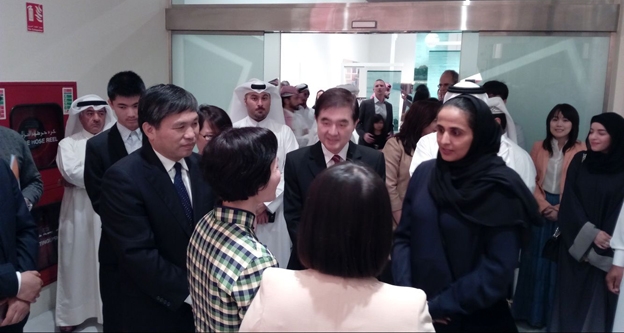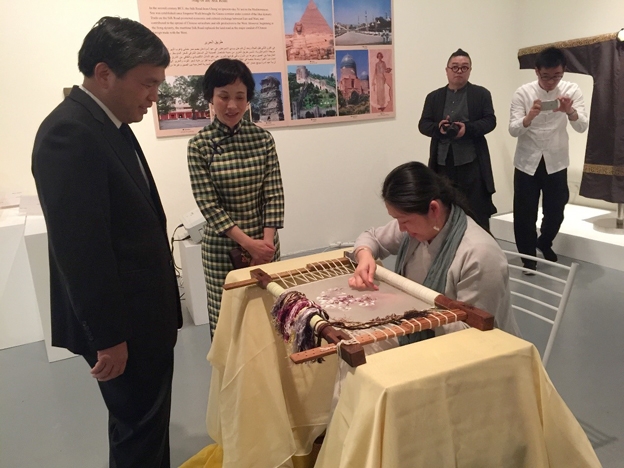Qatar, a country situated on the intersection of Asia, Africa and Europe, is both an important Western Asian nation and an important town in the Western segment of the Silk Road. Under the “One generation, One road” banner proposed by President Xi Jinping of China, China and Qatar, countries situated at either ends of the ancient silk road, began to accelerate trade and had recently decided to host the 2016 China-Qatar Cultural Year, an event intended to advance cultural exchange between these two nations. This exhibition,co-hosted by the Ministry of Culture, Zhejiang Provincial Department of Culture, Qatar Museum Authority and China National Silk Museum, was the first of a series of cultural events. It was unveiled at 6 p.m. on March 23, 2016, in the gallery of the Qatar Museum.
Princess Sheikha Al-Mayassa, accompanied by other VIP Qatari guests, was present at the opening ceremony along with the Chinese ambassador to Qatar Li Sheng, Head Commissioner of the Culture Department of Zhejiang Province Jin Xing Sheng,Head Office Manager of the Culture Department of Zhejiang Province Hu ChaoDong, and the Head of the Foreign Commission of the Culture Department of Zhejiang Province. Princess Mayassa cut the ribbon of the exhibition at the Qatar Museum, and, under the guidance of curator and researcher Xue Yan of China National Silk Museum, toured the entire exhibition. To bestow the opening ceremony with more Chinese characteristics, China invited renowned Chinese Embroidery artist Jin JiaHong, who had dedicated more than 20 years of his life to this art form, to perform traditional Chinese embroidering live. At the same time, researcher Lou Shuqi of China National Silk Museum was also performing silk weaving using a traditional loom. The exhibition received high praise from the princess, who later said that Qatar will strengthen its ties and continue to engage in cultural exchange with China. 



This exhibition carefully selected 95 pieces of ancient and modern artwork related to the Silk Road and silk production.Through the following four categories: the Silk Road, Silk’s origin, weaving techniques, silkworm domestication, this exhibition displays the busyness of the ancient Silk Road, Chinese silk’s beauty and the long history of China’sdomestication of silkworms.
In coordination with the exhibition, curator Xue Yan gave a lecture on “the Chinese Silk on the Silk Road—using examples fromclothing in the 10-14th centuries” at the Museum of Islamic Art, at 3 pm on March 21st. In it, she discussed silk fashion across the centuries in China,the relationship between clothing and human relationships, and some similarities in clothing between the Chinese and Arabs. On March 24, the curatorial team also unveiled two craftsmanship workshops, one at 10:30 am and one at 4:30 pm, and invited locals to partake in, and experience the millennium-old Chinese resist-dyeing technique, in hopes that these workshops will deepen their interest in Chinese culture.
Silk is a hugely important dedication made by the ancient Chinese people to the global civilization. It has allowed the world to better understand the depth and scope of Chinese culture. Likewise, the Silk Road was also a way for the globe to understand China in ancient times. Under the themes of Silk and the Silk Road, this exhibition aims to bridge the differences between the Chinese and Qatari people, and, on behalf of the former, offer best wishes for a better future to the Qatari people.
This exhibition was held from 3.24.2016 to 5.9.2016. (trnaslated by Bi Ran)
 Pay attention to us
×
Pay attention to us
×